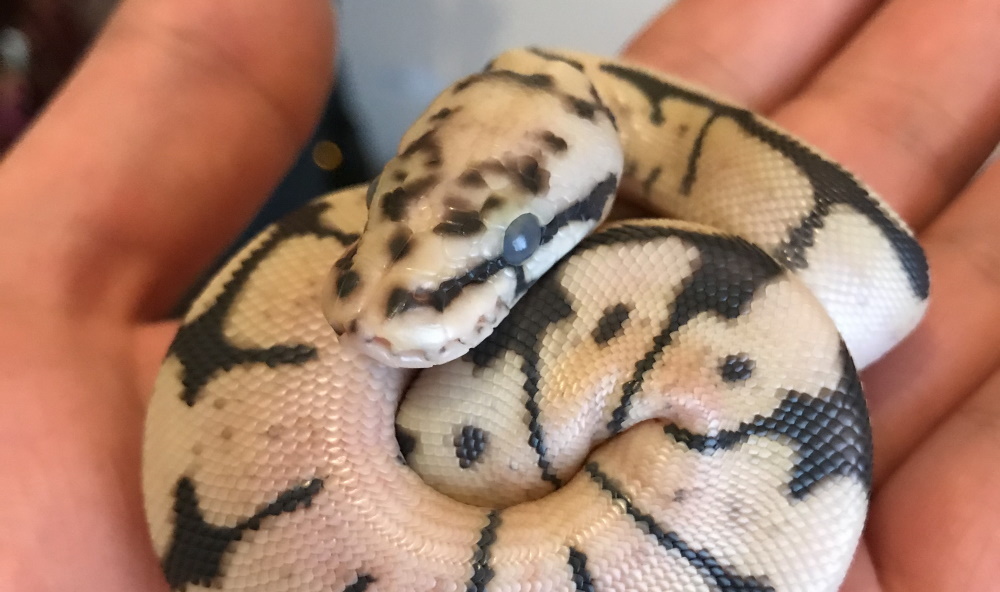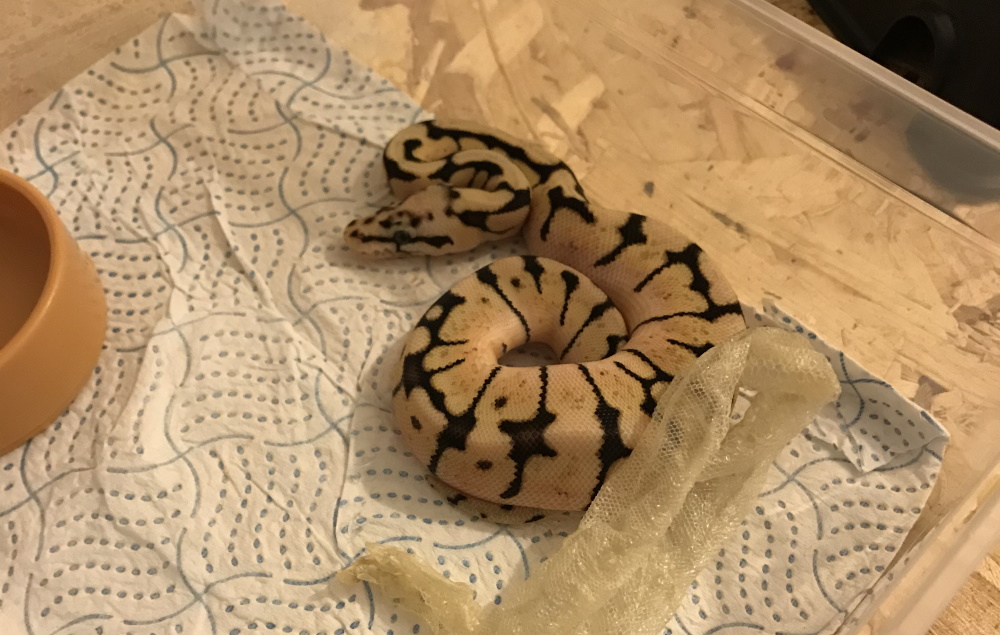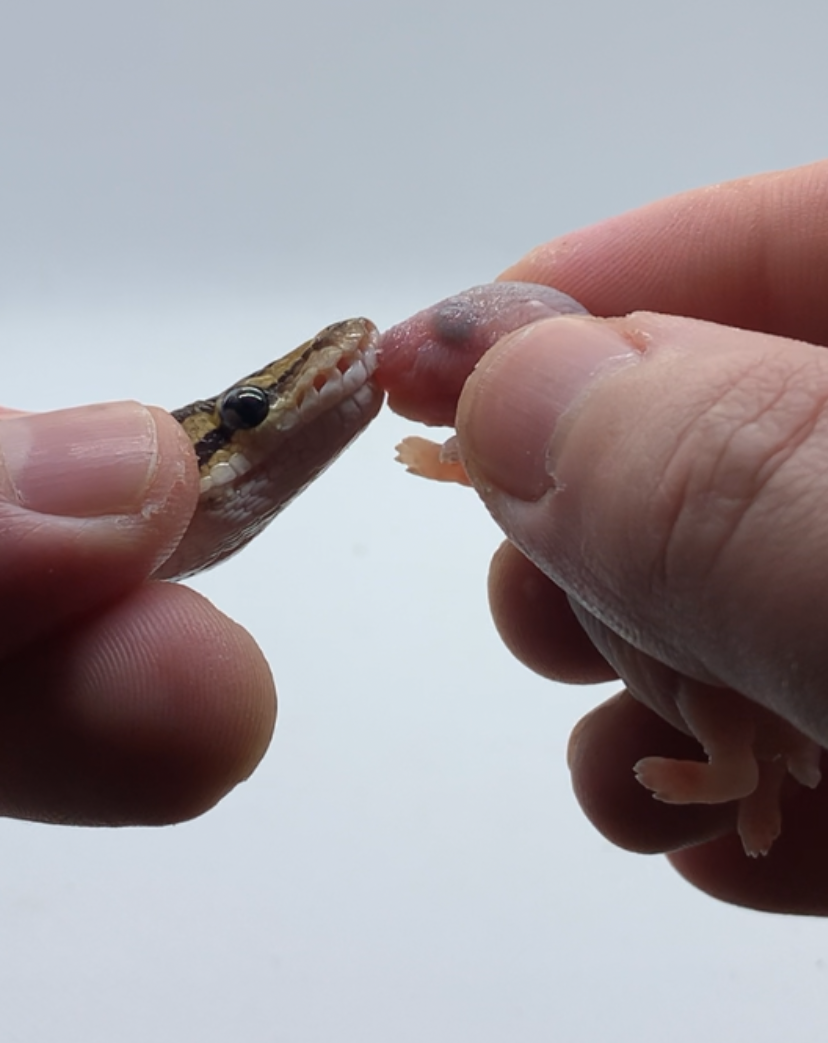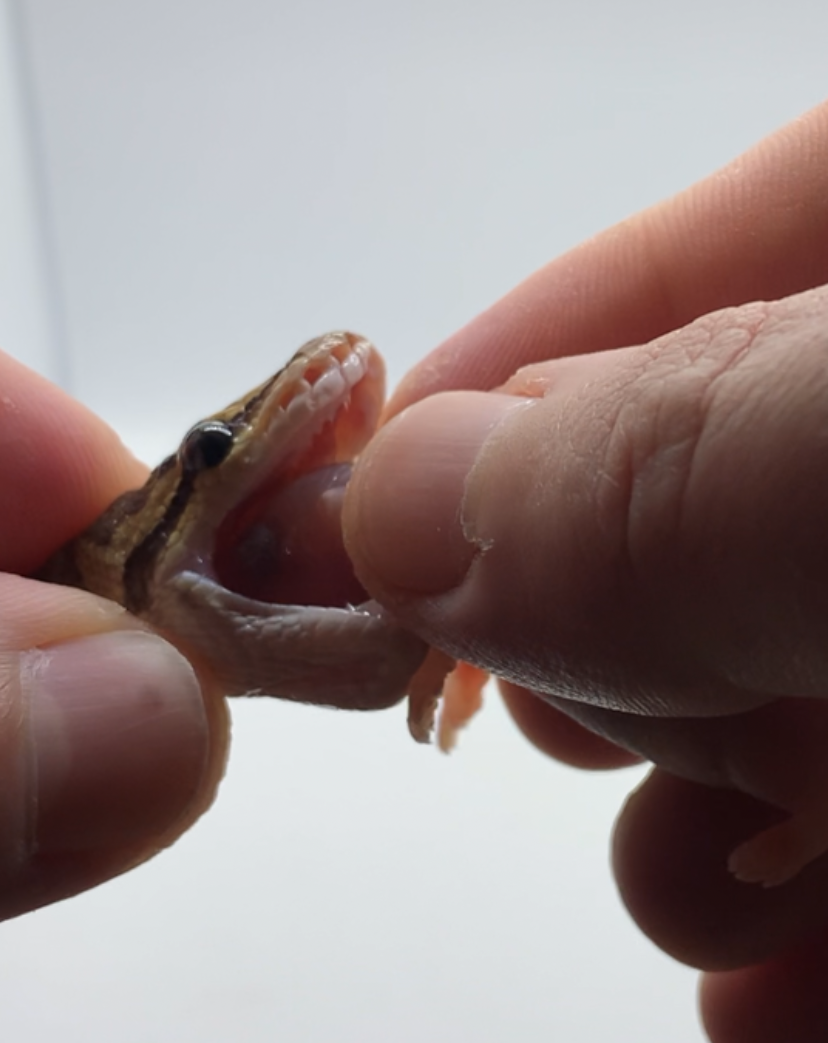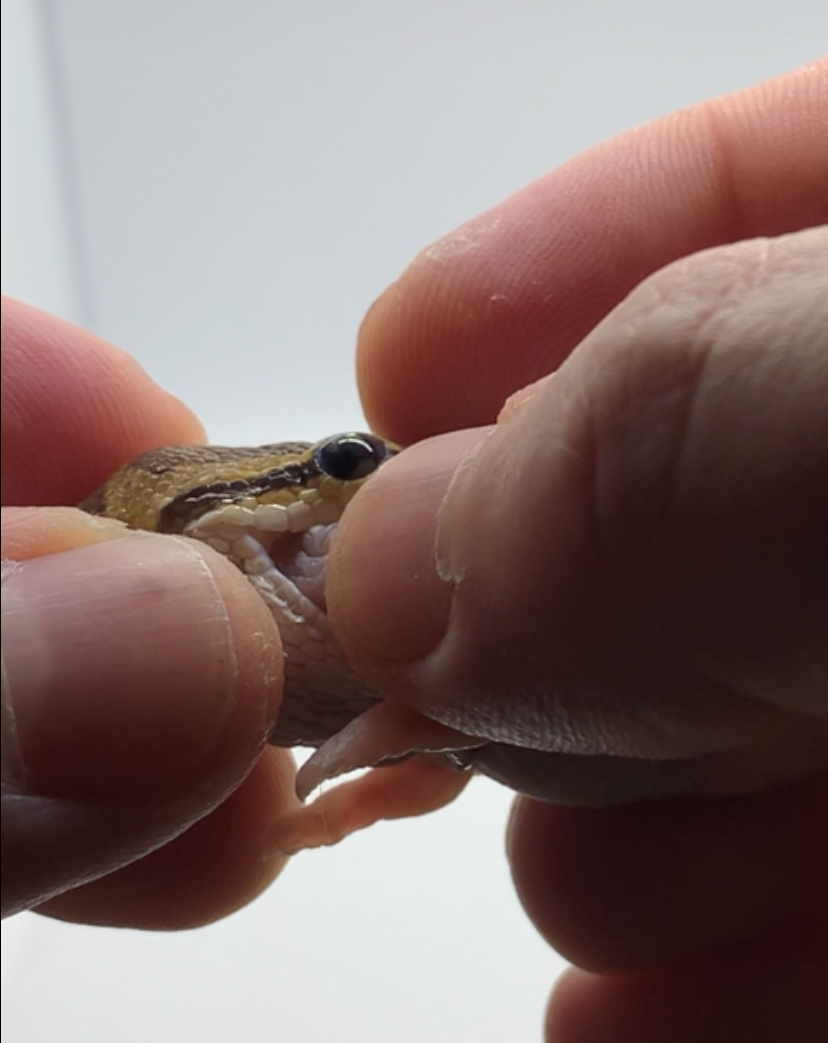This section of the website will give you all of the information needed to help get your hatchling Royal Pythons well established in captivity. Whether you're buying, or producing them yourself, this area of our site will offer all the information you need to know. This information is purely based on young specimens. For more information on caring for adult Royal Pythons, please see the Royal Python Care page.
First Shed
Once your snakes have successfully left the eggs, roughly a week later they will go through their first shed cycle. Hatchlings can be left together until this process has finished. They must be removed from the incubator box, washed down to remove any incubation medium, and housed together until they have all shed out. Maintaining good humidity levels at this time is crucial to make sure all of the hatchlings have a complete first shed. Assisting a hatchling with their first shed due to poor humidity levels can be very stressful, and can cause difficulties getting them established.
Housing Your Hatchings
Once all babies have shed out, this is a great time to sex them and identify their genetic make-up. Separate enclosures are now provided offering a small hide, bowl of water, and a hot spot of 32/33°C. Paper towels are best used as substrate to maintain good humidity levels. Small plastic tubs are recommended for housing hatchlings, as too much space can make them feel insecure, which can cause difficulties getting them established.
Hatchling Feeding
Now your hatchlings have shed out and have their own enclosures, feeding will be your next task, and this really can be challenging. Some hatchlings will feed immediately on frozen thawed mice or rats, but others can really take some work to get established.
We offer all of our newborn snakes frozen thawed rat pups or mouse fuzzies every 5-7 days. We have found that this is typically the ideal size and frequency for a hatchling ball python, and we only increase the size of their meals when were sure they are large enough. If a hatchling misses their first feeding, don't worry... try again in 5-7 days. If your royal python continues not eating for the next couple of weeks, offering a live rat pup or mouse fuzzy is your next step, generally getting a good feeding response in our experience. If this still hasn't worked, we will now begin assist feeding.
How To Assist Feed
Now that the rat pup is in place, gently place the snake down and observe to see what happens next. Often times they will thrash around in an attempt to remove the rat from its mouth. If this is the case, allow it to completely spit it out and try again, following the same process. Its worth noting that this can be a time consuming and frustrating task, and plenty of patience will be needed! We have found that once you place the snake down to observe, limiting movement is crucial and even the smallest movement can spook them, resulting in them spitting out the food.

